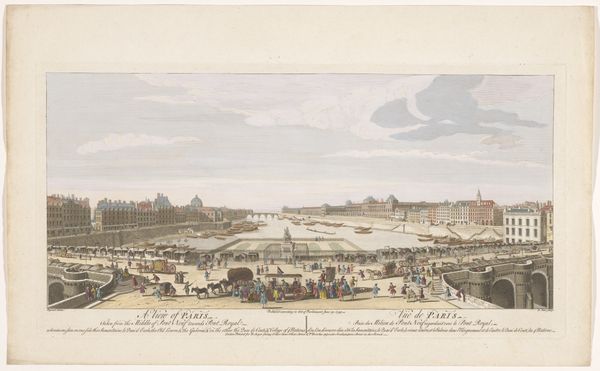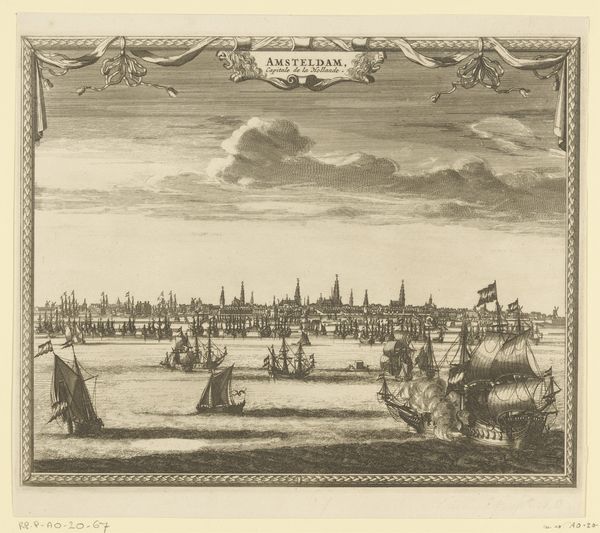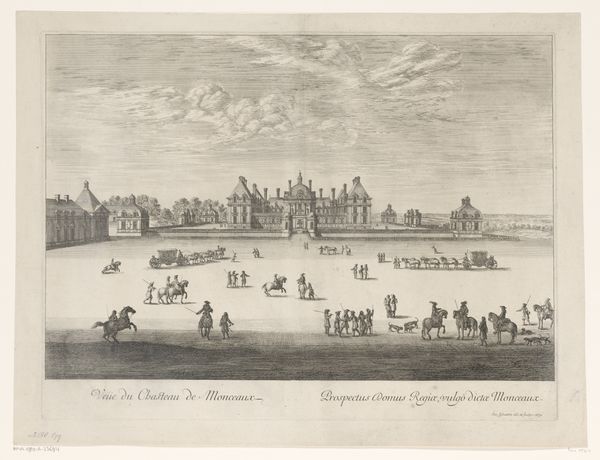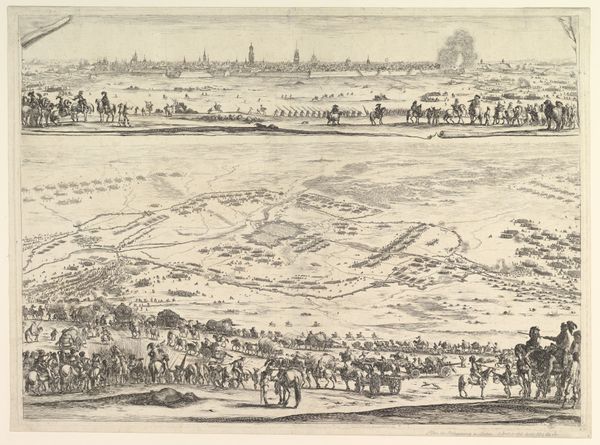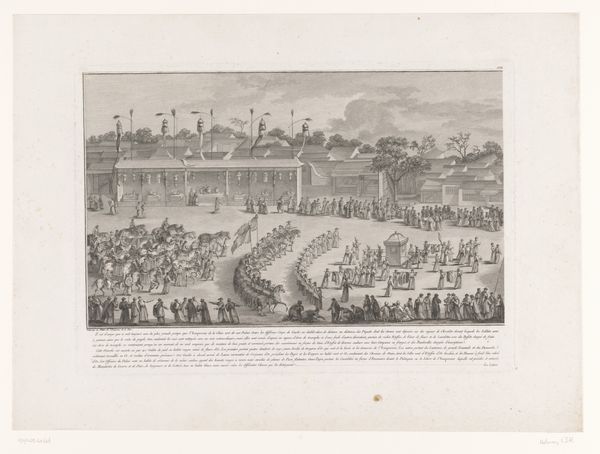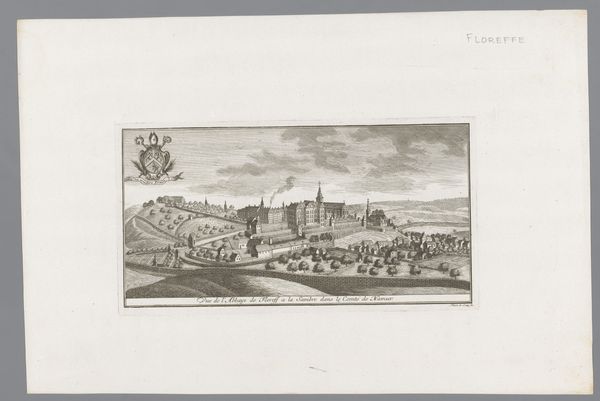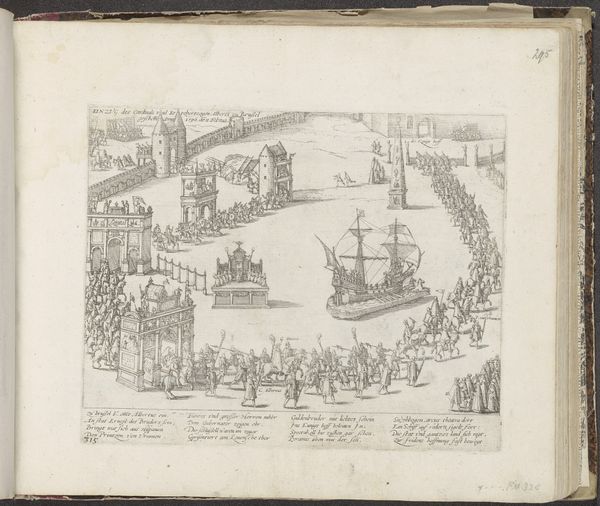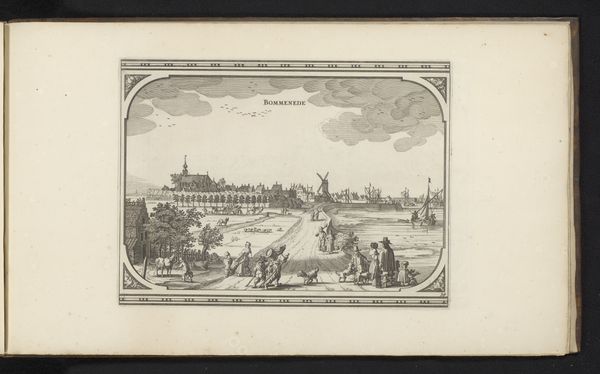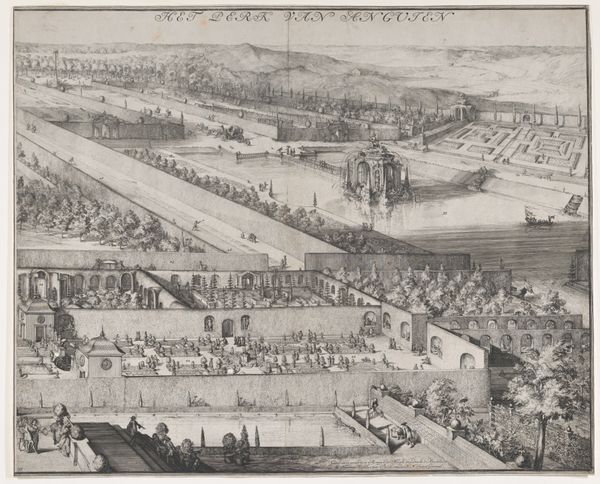
print, etching
#
dutch-golden-age
# print
#
etching
#
landscape
#
cityscape
#
genre-painting
#
history-painting
Dimensions: height 638 mm, width 931 mm
Copyright: Rijks Museum: Open Domain
Curator: Here we have "IJspret op de Amstel," or "Ice Skating on the Amstel," an etching dating from 1696 to 1711 by an anonymous artist. What are your first impressions? Editor: It's bustling! A true spectacle of a winter scene. I immediately notice the chaotic energy of figures skating and carriages traversing the frozen river. It’s almost overwhelming. Curator: Let’s look at the materials. As an etching, the image was created by using acid to bite lines into a metal plate, which was then inked and printed. The lines are fine, but so densely packed. Look how the artist suggests textures, from the sky to the frozen river. We can see how this reproduction method enabled the wide distribution of images. I wonder if people bought prints like these to experience or commemorate the events depicted within? Editor: Perhaps, because beyond the playful chaos, there are powerful symbols here. The frozen river itself, usually a conduit of trade and connection, is transformed into a stage for recreation. The fragility of ice becomes a symbol of the temporary nature of life’s pleasures and societal stability. Consider how skating and sledding evoke the ideas of freedom and play, and the danger of the frozen medium—it serves as a potent reminder of life’s inherent risks and potential for unexpected shifts in fortune. Curator: Good point, and while some may see this frozen tableau as simple pleasure-seeking, others might perceive the print as reinforcing certain class dynamics in Dutch society at the time. Remember, access to leisure activities like ice skating was certainly impacted by economic factors. In turn, did owning such images reflect a particular economic background or aspirational mindset among consumers? Editor: Yes! Look, too, at how the artist situates individual dramas against a backdrop of monumental cityscapes. The artist draws clear ties between fleeting moments and the eternal flow of cultural memory. The winter landscape itself symbolizes renewal and perseverance. These images speak to a desire for connection with ancestors and future generations—an eternal conversation across time and memory. Curator: Ultimately, the artist utilized the readily available etching medium to create this intricate landscape. This reveals an enduring and ongoing tension in art: Who shapes, who participates, and for what price do those things come to be? Editor: And as we reflect upon the etching, "Ice Skating on the Amstel" evokes not just an era, but enduring symbolic themes: transience, transformation, remembrance.
Comments
No comments
Be the first to comment and join the conversation on the ultimate creative platform.
